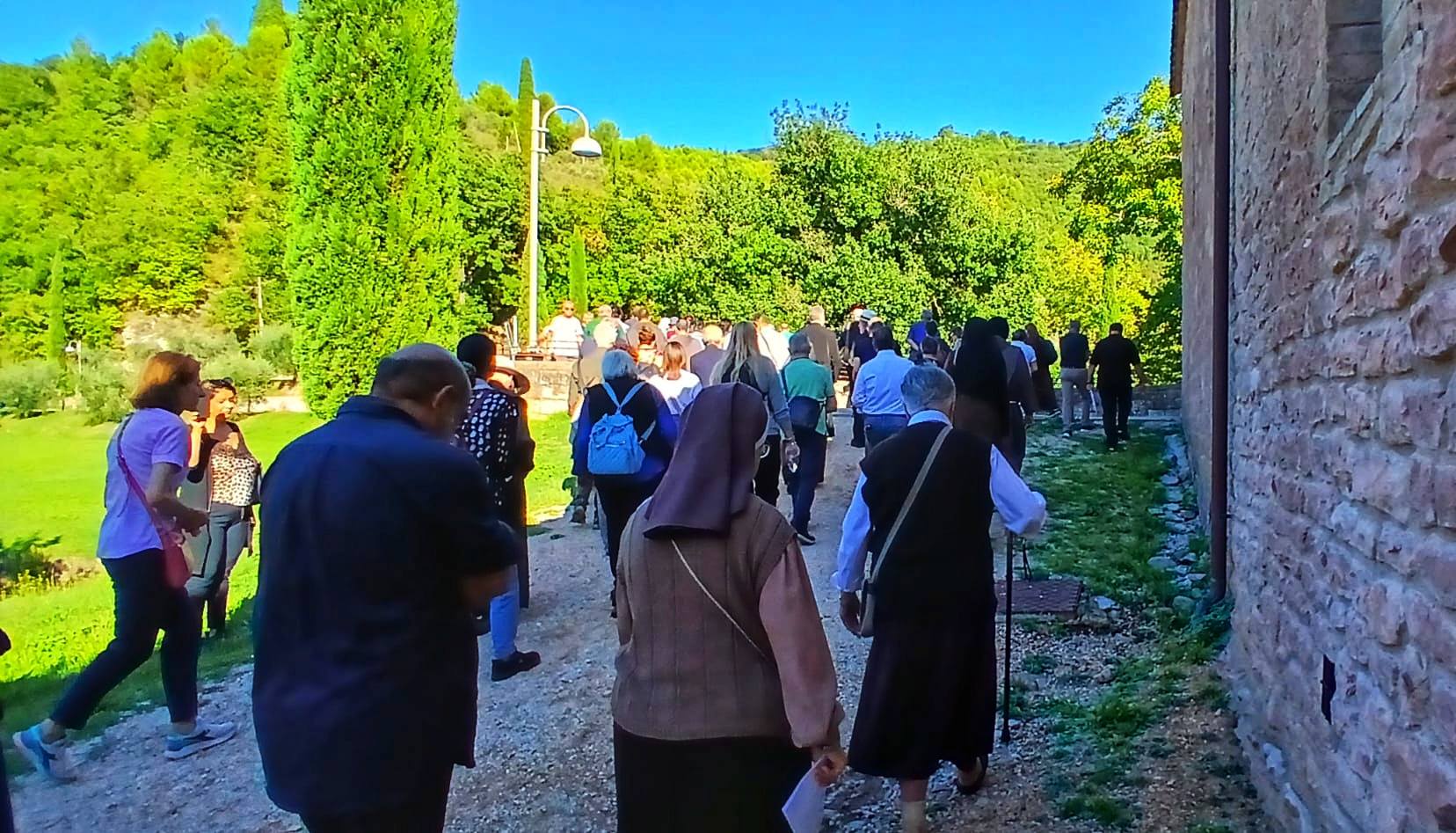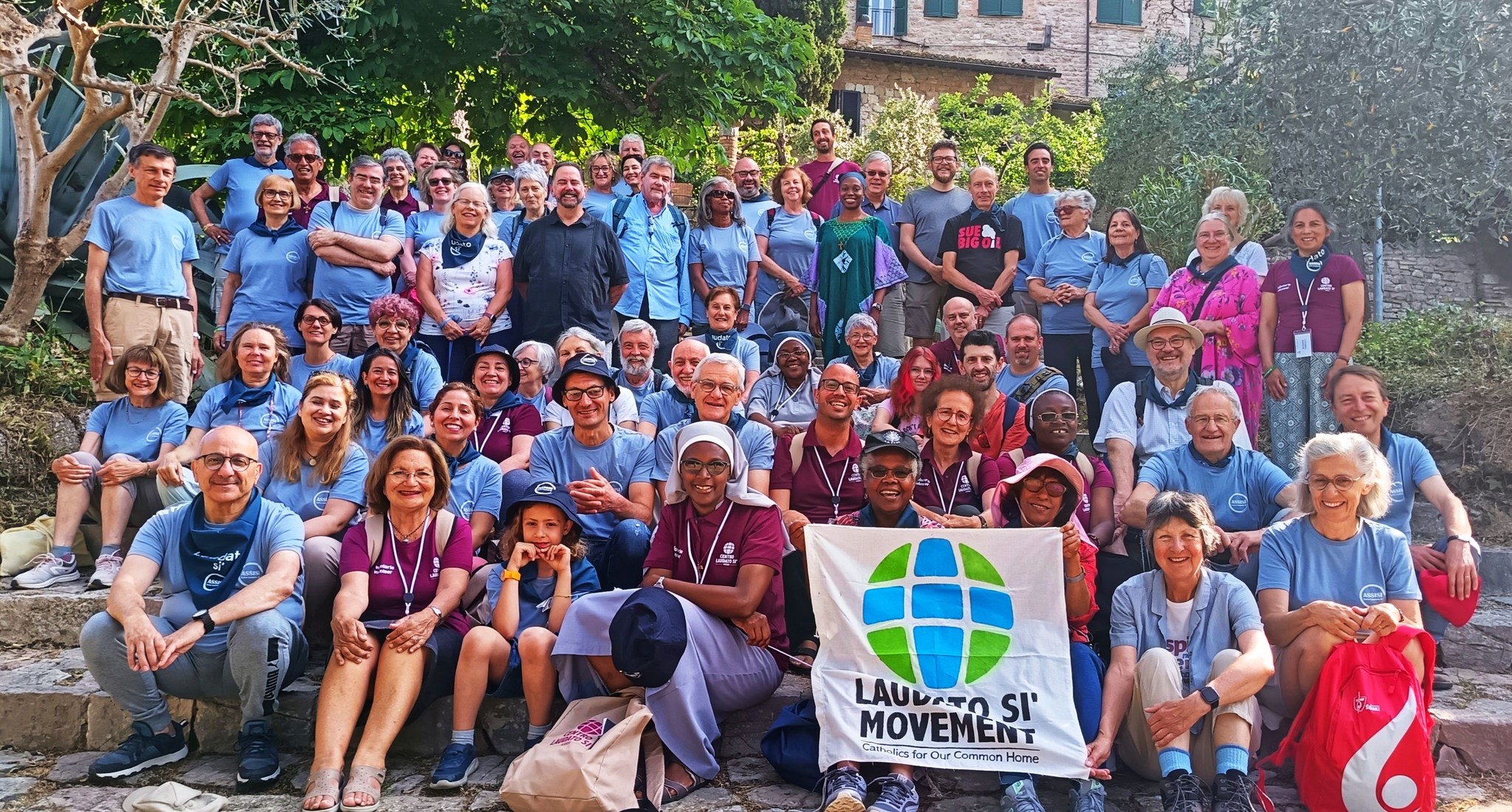Laudato Si’ Pilgrimages
“Nature is full of words of love”
Laudato Si’ 225

The Laudato Si’ Pilgrimages program allows organized groups who are planning a trip to Assisi to be able to have an immersive experience in the places, with an eye toward ecological spirituality.
Depending on the time requirements, the Retreat can be held in different formats.
Path of Prayer (2 hours) – in a single Shrine (of your choice, see section “Paths in Franciscan Shrines”);
Day Retreat (one day) – urban itinerary in the footsteps of Francis and Clare;
Full retreat (two or more days) – itinerary in the song-cry-action scheme.
Registration to organize a Pilgrimage is done through the form. Upon completion, the organizer is contacted with an email to complete the registration, entering detailed information about their group, needs, number of participants, and arrival and departure dates. The email provides an itinerary schedule, which can be modified as needed, with all logistical information.
When the organizer confirms the itinerary program, the Laudato Si’ Center makes reservations for the Shrines and organizes through Volunteers the route.
The Laudato Si’ Pilgrimages allow people to experience the entire Assisi ecosystem, with a linear narrative on the song-cry-action scheme, touching all the “Laudato Si places.”
The song of creation is experienced in the Sanctuary of San Damiano, and in particular in the Garden of the Canticle, the place where the lauda was composed by Francis; it is also enjoyed in the beauty of the paths that connect this place to the hermitage of the prisons.
The path of the cry of creation starts from the Portiuncula, a place that has collected and collects tears of compassion and hope, touches the places of the cry of nature – former Montedison and industrial zone – the places of the cry of the poor, such as the Magdalene chapel where Francis embraced the leper, and stopping at the War Cemetery, and concludes at the Sacro Tugurio, a place chosen by Francis to be close to the lepers.
The path of the action in creation follows the lives of Francis and Clare in chronological order, from the city context, starting at the Piazza del Comune, to the places of their birth and childhood, the Plateola, the house of Pietro da Bernardone, the house of Clare, and then moving on to the places of their conversion, the Cathedral of San Rufino and the Shrine of Renunciation, and concluding where they are buried, the Basilica of St. Clare, and the Basilica of St. Francis.
An immersive, multi-day journey that on the one hand uncovers previously unseen aspects of Francis and Clare, and on the other hand in their company questions us about our ecological conversion.

All paths are marked by prayer in and with creation, giving high priority to moments of prolonged silence and “ecological spirituality” (LS 216). For example, with the Laudato Si’ Chaplet or the Via Creationis, or through moments of exchange and dialogue with pilgrims.
The importance of these moments of contemplative prayer in creation stems from the Paradox of “Contempl-Action“, which is at the heart of the “Laudato si charism” of our Movement. In fact, the pilgrim walks in the footsteps of St. Francis and Jesus himself, whose lives are models of “Contempl-Action” that combined prolonged prayer in nature (Francis’ hermitages and Jesus’ “solitary places” in the mountains, desert, etc.) with active service and preaching in the cities.
A particularly valuable moment of the Retreat is the contemplative silence in the woods, either in the sacred forest of the Hermitage of the Carceri, where St. Francis prayed at Mount Subasio, or in Francis’ Woods. This is a key time to deepen the pilgrim’s “conversion to ecological spirituality.” So it is essential to turn off the cell phone that day and enjoy the gift of silence immersed in creation.